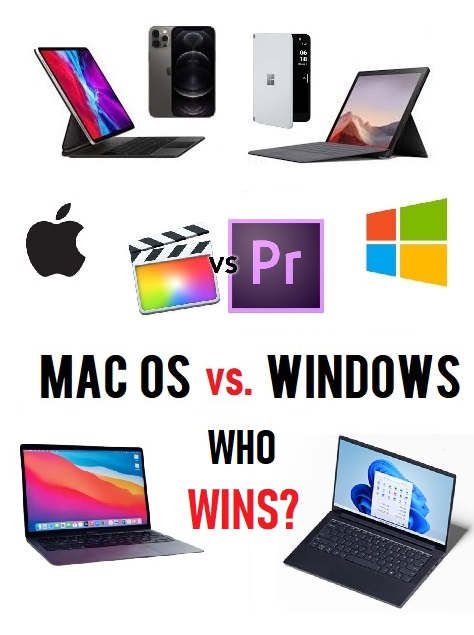Choosing the right operating system (OS) can make a huge difference in your digital experience, whether you’re a gamer, a creative professional, or just someone who wants a reliable machine for everyday tasks. With Windows 11, Mac OS, and Linux each offering unique features and benefits, it can be tricky to determine which one suits your needs best. This guide breaks down the key aspects of each OS to help you make an informed decision.

The Evolution of Windows 11: What’s New?
Windows 11 is the latest iteration of Microsoft’s operating system, designed to enhance user experience with a sleek new interface and powerful features. One of the standout changes is the redesigned Start menu, which now sits in the center of the screen and offers a more streamlined look. The taskbar has also been updated to include new widgets and improved multitasking capabilities.
Another significant update is the integration of DirectStorage technology, which drastically improves game load times by allowing games to access storage more quickly. Windows 11 also boasts enhanced support for virtual desktops and multitasking, making it easier to switch between different tasks and workspaces.
Why Windows is the Most Popular OS in 2024
Windows remains the most popular operating system, and it’s no mystery why. Its widespread use in businesses and educational institutions creates a strong ecosystem of software and hardware compatibility. Additionally, Windows 11 has introduced several user-friendly features that appeal to a broad audience. Its versatility, extensive support, and familiarity make it a go-to choice for many users.
Pros and Cons of Using Windows 11 for Gaming
Pros:
- Enhanced Performance: With features like DirectStorage, gaming performance is significantly improved.
- Broad Compatibility: Windows supports a vast library of games, including the latest releases.
- Customizability: Gamers can tweak settings and install mods to enhance their experience.
Cons:
- System Requirements: Windows 11 has higher system requirements, which might necessitate hardware upgrades.
- Updates: Frequent updates can sometimes disrupt gaming sessions or require restarts.
Windows 11 AI Integration: What You Need to Know
Windows 11 incorporates AI in several ways to improve productivity and user experience. The AI-powered Copilot feature, for instance, assists with tasks such as summarizing documents or generating content ideas. This makes it easier for users to handle complex tasks efficiently.
Additionally, Windows 11’s AI capabilities extend to security, with advanced threat detection and malware protection built into the OS. These features help keep your data safe and your system running smoothly.
The Rise of ARM-Based Windows PCs
ARM-based PCs are gaining traction, thanks to their energy efficiency and performance. Devices like the Surface Pro X and newer laptops with ARM processors offer long battery life and fast performance. These PCs are ideal for users who need a portable and efficient machine for everyday tasks.
Windows vs. Mac for Creative Professionals
When it comes to creative work, both Windows and Mac OS have their strengths.
Mac OS for Creative Professionals: Pros and Cons
Pros:
- High-Quality Software: Mac OS is renowned for its high-quality creative software like Final Cut Pro and Logic Pro.
- Excellent Display: MacBook screens are known for their color accuracy, which is crucial for design and video editing.
Cons:
- Cost: Mac devices are generally more expensive than their Windows counterparts.
- Limited Customization: Mac OS is less customizable compared to Windows.
Windows for Creative Professionals: Pros and Cons
Pros:
- Wide Range of Software: Windows supports a broad range of creative software, including Adobe Creative Suite.
- Hardware Variety: There’s a wider selection of hardware available, allowing you to choose the best specifications for your needs.
Cons:
- Inconsistent Software Experience: Some creative applications may not perform as well on Windows as they do on Mac OS.
Comparing MacBooks with Windows Laptops
When choosing between a MacBook and a Windows laptop, consider the following:
- Performance: High-end Windows laptops often offer better performance for the price.
- Operating System: Mac OS provides a streamlined and user-friendly interface, while Windows offers more customization and flexibility.
- Price: MacBooks tend to be more expensive than comparable Windows laptops.
Pros and Cons of Using Mac OS for Everyday Use
Pros:
- User Experience: Mac OS is known for its smooth and intuitive user interface.
- Security: Mac OS has robust security features that help protect your data.
Cons:
- Compatibility: Some software and applications are not available on Mac OS.
- Price: Mac devices are generally more costly than their Windows or Linux counterparts.
Apple’s M1, M2, and M3 Chips: A Complete Overview
Apple’s M1, M2, and M3 chips mark a significant leap in performance and efficiency for Mac devices. The M1 chip, introduced in 2020, set a new standard for speed and battery life. The M2 and M3 chips build on this foundation with improved performance and energy efficiency, making them ideal for demanding tasks such as video editing and gaming.
Linux: The Flexible Choice
Linux is a versatile operating system that offers great customization and control. It’s a popular choice for developers and tech enthusiasts due to its open-source nature and robust community support.
Pros:
- Customization: Linux allows for extensive customization, from the user interface to system functionality.
- Security: Linux is known for its strong security features and minimal risk of malware.
Cons:
- Software Compatibility: Some commercial software is not available on Linux, which can be a drawback for general users.
- Learning Curve: Linux can be complex for those unfamiliar with its interface and commands.
Conclusion
Choosing the right operating system depends on your specific needs and preferences. Windows 11 offers great performance and flexibility, making it ideal for gaming and general use. Mac OS excels in creative tasks with its high-quality software and user-friendly interface. Linux provides unparalleled customization and security but may require a steeper learning curve.
Ultimately, consider what you value most in your computing experience—whether it’s performance, software availability, or customization. Each OS has its strengths, and understanding these can help you make the best choice for your needs.






